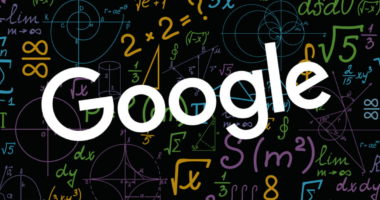Google has recently rolled out a new technology in its search rankings called RankBrain, which helps Google provide better results to users. RankBrain is supposed to power everything from personalization features, to speech synthesis and machine learning, to more advanced algorithms like PageRank and Hummingbird.
A company like Google has the resources to make changes to Google’s search algorithm that can often have severe effects on the way that a business is ranked. Google’s new technology helps create powerful ranking algorithms by using machine learning that combines the wisdom of the crowd to make the search result more relevant.
While ranking factors are an important part of Google’s algorithms, the actual formulas used to create the rankings are not public, which is a shame, since without them, it’s difficult to know how Google’s rankings are formed.
Google has released new technologies that will make it easier and faster to explore and develop new algorithms that can be deployed quickly.
This enables Google to swiftly develop new anti-spam algorithms, improve natural language processing, and ranking-related algorithms, and deploy them faster than ever before.
Improved TF-Ranking Corresponds to Recent Google Updates
This is significant because, in June and July 2023, Google released many spam-fighting algorithms as well as two core algorithm upgrades. Those events occurred shortly after the publication of this new technology in May 2023.
It’s possible that the timing is coincidence, but given everything that the new Keras-based TF-Ranking achieves, it’s worth familiarizing yourself with it to understand why Google is releasing new ranking-related algorithm improvements at a faster rate.
Keras-based TF-Ranking has been updated.
Google has released a new version of TF-Ranking that can be used to improve neural learning to rank algorithms and natural language processing algorithms such as BERT.
Advertisement
Continue reading below for more information.
It’s a powerful technique to design new algorithms and enhance old ones in a lightning-fast manner.
Ranking of TensorFlow
TensorFlow is a machine learning platform, according to Google.
The original version of TensorFlow Ranking was explained as follows in a YouTube video from 2019:
“The world’s first open source deep learning library for large-scale learning to rank (LTR).”
The first TF-Ranking platform was unique in that it altered the way relevant papers were ranked.
In what is known as pairwise ranking, previously relevant materials were compared to one another. The odds of one document being relevant to a query were compared against the odds of another item being relevant.
This was not a comparison of the complete list, but rather a comparison of pairs of papers.
TF-Ranking was unique in that it allowed for the comparison of a whole list of documents at once, a process known as multi-item scoring. This method provides for more accurate ranking selections.
Advertisement
Continue reading below for more information.
Faster Development of Powerful New Algorithms Thanks to Improved TF-Ranking
The new TF-Ranking, according to a Google article published on their AI Blog, is a key release that makes it easier than ever to put up learning to rank (LTR) models and get them into live production faster.
This means Google can design new algorithms and incorporate them into search more quickly than ever before.
According to the article:
“Our Keras ranking model has a brand-new workflow design, which includes a customizable ModelBuilder, a DatasetBuilder for setting up training data, and a Pipeline for training the model using the provided dataset.
These components make customizing an LTR model easier than ever before, and they allow for quick exploration of new model structures for production and research.”
BERT TF-Ranking
When an article or study paper claims that the results were marginally improved, with limitations and the need for more research, it’s a sign that the algorithm in question isn’t in use because it’s not ready or because it’s a dead-end.
TFR-BERT, a hybrid of TF-Ranking and BERT, is not one of them.
BERT is a natural language processing technique based on machine learning. It’s a technique for deciphering search queries and web page content.
BERT is one of Google and Bing’s most significant enhancements in recent years.
According to the article, using TF-R and BERT to optimize the ordering of list inputs resulted in “substantial improvements.”
This assertion that the results were substantial is noteworthy since it increases the likelihood that something similar is in use right now.
The implication is that Keras-based TF-Ranking increased the effectiveness of BERT.
Google claims that:
“Our experience demonstrates that this TFR-BERT architecture improves pretrained language model performance significantly, resulting in state-of-the-art performance for a variety of common ranking tasks…”
GAMs and TF-Ranking
Another type of technique that TF-Ranking improves and makes even more powerful than the original is called Generalized Additive Models (GAMs).
One of the things that distinguishes this algorithm is that it is transparent, in the sense that everything that goes into generating the ranking can be seen and comprehended.
Advertisement
Continue reading below for more information.
This is how Google explained the value of transparency:
“When using LTR models in ranking systems to determine the outcomes of procedures like loan eligibility evaluation, advertisement targeting, or directing medical treatment decisions, transparency and interpretability are critical.
In such circumstances, the contribution of each individual element to the final ranking should be observable and intelligible in order to ensure that the results are transparent, accountable, and fair.”
The issue with GAMs is that no one knew how to use this technology to solve ranking difficulties.
TF-Ranking was utilized to construct neural ranking Generalized Additive Models (GAMs) that are more open to how web pages are rated in order to tackle this difficulty and be able to employ GAMs in a ranking scenario.
This is referred to as Interpretable Learning-to-Rank by Google.
According to the Google AI article:
“To that purpose, we created a neural ranking GAM, which is a generalized additive model that is extended to ranking problems.
Unlike normal GAMs, a neural ranking GAM can construct an interpretable, compact model by taking into consideration both the attributes of the ranked items and the context features (e.g., query or user profile).
For example, using a neural ranking GAM, the figure below shows how distance, price, and relevance, in the context of a certain user device, contribute to the hotel’s ultimate ranking.
As part of TF-Ranking, neural ranking GAMs are now available…”
I inquired about TF-Ranking and GAMs with Jeffery Coyle, co-founder of AI content optimization tool MUSE.
Advertisement
Continue reading below for more information.
GAMs is an essential technology, and improving it was a major event, according to Jeffrey, who has a computer science background as well as decades of experience in search marketing.
Jeffrey Coyle gave the following information:
“I’ve spent the most time examining Google’s neural ranking GAMs innovation and its potential impact on context analysis (for queries), which has been a long-term aim of the scoring teams at Google.
For personalization (particularly user data and context information, such as location) and intent analysis, neural RankGAM and related technologies are lethal weapons.
We can see the innovation at a basic level by looking into keras dnn tfrecord.py, which is provided as a public sample.
I strongly advise everyone to look into that code.”
Gradient Boosted Decision Trees Outperform (BTDT)
Beating the standard in an algorithm is significant since it indicates that the new method has improved the quality of search results.
Gradient boosted decision trees (GBDTs), a machine learning technique with various advantages, are the gold standard in this scenario.
Advertisement
Continue reading below for more information.
However, Google also points out that GBDTs have drawbacks:
“GBDTs can’t be applied directly to big discrete feature spaces like raw document text. They’re also less scalable than neural ranking models in general.”
Is Neural Rankers Still Outperformed by Gradient Boosted Decision Trees? was the title of a research article. According to the researchers, neural learning to rank models is “significantly inferior” to “tree-based implementations.”
The Data Augmented Self-Attentive Latent Cross (DASALC) model was created by Google researchers using the new Keras-based TF-Ranking.
DASALC is significant because it can match or exceed current state-of-the-art baselines:
“Our models can compete with the strong tree-based baseline while beating recently published neural learning to rank approaches by a significant margin. Our findings can also be used to rate models using neural learning.”
Keras-based TF-Ranking Accelerates Ranking Algorithm Development
The key point is that this new approach accelerates the study and development of new ranking systems, which includes detecting spam and removing it from search results.
Advertisement
Continue reading below for more information.
The essay finishes with the following:
“Overall, we believe that the new Keras-based TF-Ranking version will make neural LTR research and deployment of production-grade ranking systems easier.”
Over the last few months, Google has been innovating at a faster pace, with multiple spam algorithm improvements and two core algorithm updates in less than two months.
These new technologies could explain why Google has been releasing a slew of new algorithms to increase spam detection and website ranking in general.
Citations
Advances in TF-Ranking: A Google AI Blog Article
The New DASALC Algorithm from Google Gradient Boosted Decision Trees still outperform Neural Rankers.
TensorFlow’s official website
https://github.com/tensorflow/ranking/releases/tag/v0.4.0 TensorFlow Ranking v0.4.0 GitHub page
keras dnn tfrecord.py is a Keras example.
Have you ever heard of Google’s PageRank algorithm? It’s a method for measuring the value of a web page, and it’s designed to make the best possible recommendation for you as a user of the internet. The PageRank algorithm isn’t perfect, but Google’s search engine has been the undisputed king of search for the past decade.. Read more about google search ranking algorithm and let us know what you think.
Frequently Asked Questions
What is new Google algorithm?
The Google algorithm is a set of rules that determines how search engine results are ranked.
What search algorithm does Google use?
Google uses a combination of proprietary algorithms, including PageRank and Hummingbird.
What is Google algorithm for SEO?
Google algorithm for SEO is a ranking system that uses many different factors to determine how well a website ranks in search results.



